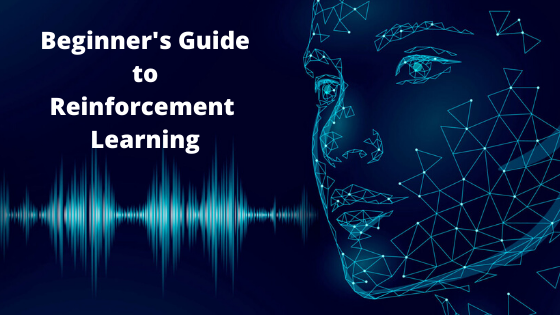History of Reinforcement Learning-
1979 was famous for Micheal Jackson releasing his album “Off the Wall” and ESPN came to cable TV but the year is also noted for the initiation of the researcher’s focus on reinforcement learning. “Heterostatic theory of adaptive systems” developed by A. Harry Klopf was the foundation stone for the development of Reinforcement learning. Reinforcement Learning is the buzzword across industries, domains, and career options.
Considering much time has passed between 1979 and 2020, the evolution of Reinforcement Learning is progressing at a breakneck speed.
Reinforcement Learning is becoming one of the most researched areas in the fields of machine learning, artificial intelligence, and neural network research.
Reinforcement learning introduction
For simple understanding, we will refer to Reinforcement Learning as RL in the article.
Trial and Error method are employed over the years to find the best solution to a problem and our complex human brain uses it to learn and discover new solutions. Machine Learning is all about developing computer programs to access the large quantum of data and learn quickly. Self-learning is the keyword here as we all expect AI programs to learn quickly without much human intervention.
Reinforcement learning is a type of Machine Learning interested and concerned with how the software agents behave or interact or take actions in an environment. RL algorithms are all about taking the best action in an environment or a situation.
The whole premise behind RL is that the correct actions are rewarded and the wrong steps are punished.
Reinforcement learning is simply a machine learning extension of how our brain works in real-life. The brain learns from experiences and makes the correct decision because it understands what’s wrong action or right action.
The idea behind Reinforcement Learning:
A below illustration summarizes it perfectly:
The above image illustrates the rewards and punishment process.
- The dog sees an empty bowl and doesn’t move at all. So, we assign a negative value of -1.
- The dog sees a Food bowl and starts eating. So, we give positive value of +1.
The above is an example of conditioning of a brain to changes in the environment. RL uses positive rewards to train software agents to make the correct decision.
Positive reinforcement is given to encourage positive behavior. Negative reinforcement is taken away to encourage the behavior of the agents.
Reinforcement learning is distinct from other machine learning methods, as it isn’t taught how to solve the problem. It employs different psychological methods to imitate human learning processes.
Different Terminologies used in Reinforcement learning:
- Action (A): Different moves that the agent can take to earn rewards
- State (S): Current situation returned by the environment.
- Reward (R): An immediate return sent by the environment after the evaluation of the Agent last step
- Policy (π): The strategy deployed to help the agent determine the next course of action based on the current state situation.
- Value (V): The expected long-term return with a discount is defined as the expected long-term return of the current state under policy π.
- Q-value or action-value (Q): Q-value is similar to Value, except that it takes an extra parameter, the current action a. Qπ(s, a) refers to the long-term return of the current state s, taking action an under policy
Reinforcement Learning Algorithms
The approach to the Reinforcement learning is centered on 3 algorithms-
Value-Based
In the method, the focus in on maximizing a value function V(s). The agent is expecting a long-term return of the current states under policy π.
Policy-based
This is a policy-based Reinforcement Learning method, developers core idea here is to devise a policy that the action performed in every state helps you to gain maximum rewards in the near future.
2 Types of Policy Based Learning-
- Deterministic– We can take any state, the same action is provided by the policy π
- Stochastic: We consider the aspect that Every action has a certain probability, this is determined by the following equation represented below:
Model-Based:
The idea is to create a virtual model for each environment and helping in educating the agent to perform in a specific environment.
Features of Reinforcement Learning Methodology:
- Unsupervised learning
- Sequential decision making
- Feedback is delayed
- Agent actions have an impact on the subsequent data it’s scheduled to receive
Different types of Reinforcement Learning
Positive:
An event that occurs due to a specific action taken by an agent in an environment or a situation. It occurs when the agent does an action that is positive and helps in getting closer to a solution.
Negative:
This is defined as the strengthening of behavior when the agent avoids negative conditions or is stopped from doing the same.
Practical Applications of Reinforcement Learning
- Robotics
- Machine Learning and Data Processing
- Develop Training systems
Why You Should Learn Reinforcement Learning
There are plenty of reasons to embrace Reinforcement Learning and take a huge step towards a career advancement-
- Discover the best Action for getting the best solution to a problem
- Find the best action that gets yield biggest reward over a period of time
- Understand the problem and find out which situation requires an agent action
Where we should avoid Reinforcement Learning
Reinforcement Learning is a great solving method but doesn’t suit every problem we have at hand. I will define some conditions where Reinforcement learning isn’t suited at all-
- There is ample data available for Supervised learning
- Computing heavy and time-consuming process and might not be suitable for some processes
Challenges facing Reinforcement Learning:
RL has caught up in a big way and various enterprises are working on it to fuel the next growth of AI. There remain some challenges for Reinforcement Learning and I am going to list out some of them-
- Swift Learning on system possessing limited data
- Reward Functions which are unspecified, multiple purposes or has risk factors
- Large and unknown delays relating to system actuators, sensors, or rewards
- Non-stationary or stochastic Tasks
- Extensive Reinforcement may lead to a scenario where an overload of states can happen leading to diminishing results.
Top Career Opportunities:
As per the data available from the Online Job Portal Indeed, Machine Learning Engineer is ranked as one of the top Job of 2019 with an estimated 344% growth and boasting an average base salary of $146,085 per year. 2020 will follow the trend as we will see more emergence of AI and scope is unparalleled for individuals acquainted with Machine Learning.
- Software Engineer
- Data Scientist
- NLP Scientist
- Business Intelligence Developer
- Computational Linguist
Summary of Reinforcement Learning:
- Reinforcement Learning is a type of Machine Learning
- Helps you in discovering the best reward for an action
- There are 3 methods for learning RL
- 2 Types of reinforcement learning are a) Positive b) Negative
- The problem with RL is that it isn’t suitable for processes with a huge quantum of data.
Reinforcement Learning is going to shape the next wave of AI breakthroughs in the upcoming years and it makes absolute sense for interested individuals to show a keen interest in the field of Machine Learning. Reinforcement Learning Tutorials are available for individuals keen to stamp their authority and make a jump to dizzying heights.
Accredian is offering courses for Machine Learning and helping people make the right decisions in regards to a proper learning medium for AI career growth.
Time to act and start on the path to learning Reinforcement Learning!






